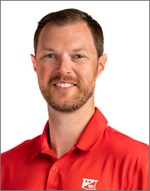Corn Ear Feeding: Western Bean Cutworm versus Corn Earworm
BY Dairyland Seed Agronomy Team
This time of the year, we typically find two species of larvae feeding on ears of corn: western bean cutworm (WBC) and corn earworm (CEW). It’s too late for any additional control measures in 2022, but the Dairyland Seed Agronomy Team has been responding to many questions about their presence in the field. Past 2022 information regarding WBC can be found in the June 29th edition of our newsletter. At the risk of repeating some information, here are some basics of these pests.

Identification
- WBC: note the 2 black “plates” on the head. No lateral lines running along the sides of the body.
- CEW: Lateral light-colored stripe running the length of the body. Dark “worts” or tubercles.

Damage
- Ear feeding is similar with either pest, and can lead to yield loss and mycotoxin or quality issues.
- Yield losses can be as high as 15-20% in extreme cases.
- WBC are not cannibalistic, so multiple larvae can feed on one ear. They can also bore through the husks.
- CEW are cannibalistic and are usually only found one at a time. Typical ear entry is through the silk channel.
Control
- CEW is labeled for control by all Bt hybrids from Dairyland Seed, while WBC is controlled by only the AcreMax® Leptra® insect protection.
- Insecticide timing is crucial. Insecticides must be applied when eggs are present and before larvae migrate to the ear. Once larvae are sheltered by the husks, insecticides are ineffective.
As stated previously, controlling any WBC or CEW problems is likely a missed opportunity if not already done for 2022. The best course of action at this point is to monitor damage for the development of any quality issues (such as mycotoxins) and adjust harvest strategies accordingly. Contact your local Dairyland Seed Representative for any inquiries about 2022 and pay attention to 2023 pest development during late June and into July.
 |
 |
 |
 |
 |
| Brian Weller Western Region 507.456.3034 |
Dan Ritter Central Region 219.863.0583 |
Branden Furseth Northern Region 608.513.4265 |
Mark Gibson Eastern Region 260.330.8968 |
Amanda Goffnett Eastern Region 989.400.3793 |
